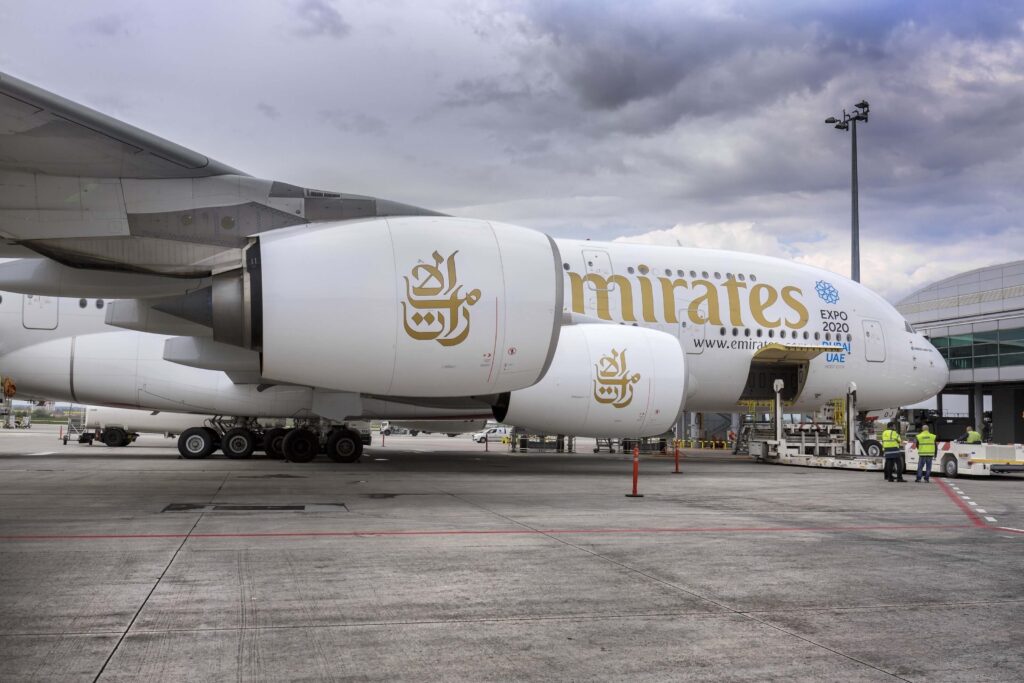On June 15, 2021, Emirates Group announced its annual financial results, reporting massive losses amid the ongoing pandemic that curtailed international air travel demand. Despite the first annual loss in over three decades, Emirates’ order book commitments for 200 aircraft remain unchanged.
The Emirates Group posted a net loss of AED 22.1 billion ($6 billion) for the financial year ended March 31, 2021, compared to an AED 1.7 billion ($456 million) profit for last year. The subsidiary of Emirates Group, Emirates posted a loss of AED 20.3 billion ($5.5 billion) down from AED 1.1 billion ($288 million) profit in the previous year.
Emirates’ passenger and cargo capacity declined by 58% to 24.8 billion available tonne-kilometers (ATKM) at the end of the financial year of 2020-2021, due to a complete suspension of commercial passenger operations for nearly eight weeks as directed by the United Arab Emirates (UAE) government from March 25, 2020. Adding to that, Emirates carried 6.6 million passengers in 2020 and 2021, with seat capacity down by 83%.
“The COVID-19 pandemic continues to take a tremendous toll on human lives, communities, economies, and on the aviation and travel industry. In 2020-21, Emirates and dnata were hit hard by the drop in demand for international air travel as countries closed their borders and imposed stringent travel restrictions,” Chairman and CEO of Emirates Group Ahmed bin Saeed Al Maktoum said.
Despite huge losses in the financial year of 2020/2021, Emirates’ commitment for 200 aircraft orders will remain unchanged, as the Dubai-based air carrier is “firmly committed to its long-standing strategy of operating a modern and efficient fleet”.
During the last financial year, Emirates, being the world’s largest Airbus A380 aircraft operator, received three new Super Jumbos. Additionally, the Dubai-based air carrier invested to upgrade its signature Airbus A380 aircraft with Premium Economy class.
However, due to the ongoing crisis, Emirates phased out 14 older aircraft from its fleet comprised of nine Boeing 777-300ERs and five Airbus A380 aircraft, leaving its total number of aircraft at 259 with an average age standing at 7.3 years, as per Emirates data.
Furthermore, in order to tackle the cost problem, Emirates Group received a capital injection of AED 11.3 billion ($3.1 billion) from the UAE government. However, the government’s aid did not stop the airline from implementing redundancies across all layers of business. As a result, the Group’s total workforce decreased by 31% to 75,145 employees.
“Our top priorities throughout the year were: the health and wellbeing of our people and customers, preserving cash and controlling costs, and restoring our operations safely and sustainably,” Maktoum added. “Unfortunately, we still had to make the difficult decision to resize our workforce in line with reduced operational requirements.”
